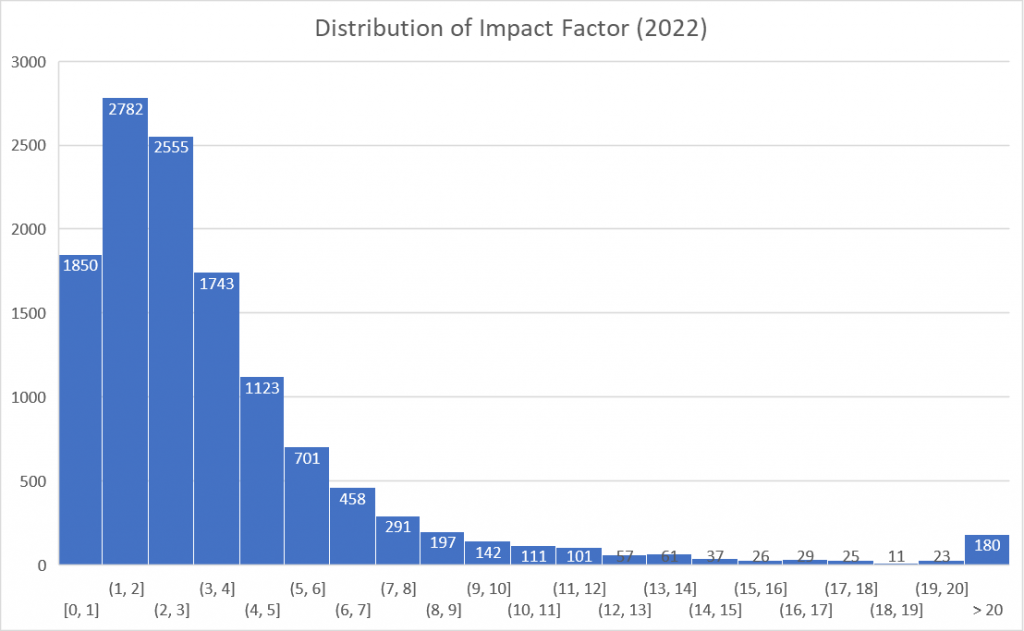When we compile product citations for our clients, we provide a field called “Impact Factor” in the Excel report. What does it mean? Why is it valuable?
Impact factor is a measure of the reputation and influence of a scientific journal. It is calculated based on the number of citations received by the journal’s articles in a given year, and is considered a key factor in determining the quality and importance of a journal’s research. By knowing the impact factor, you can prioritize to read the citations in better journals.
The range of impact factor values is broad, from 0 to over 100. The distribution is highly skewed, with the majority of journals having an impact factor of less than 5, and only a few having an impact factor of more than 20, such as Nature, Science, and Cell. The median is 2.6. So if you see a journal with impact factor 2.6, it’s actualy better than 50% of the journals. See the figure below.

The impact factor is not stationary. You might have noticed that the impact factors of some journals are increasing. This is actually the case. If we plotted the average impact factor of all journals in the past 8 years, we do see a increase.


Comments
Pingback: A Thought for the Scary Season (#2): There Are Too Many Behavior Analysis Journals. I Can Prove It. – BEHAVIOR ANALYSIS BLOGS